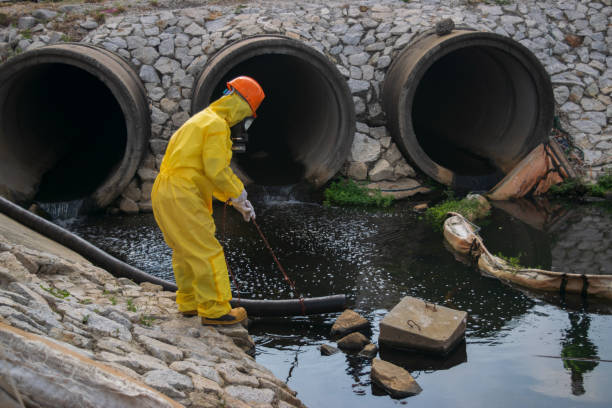When your home or business suffers a flooding basement, knowing the right tools and equipment for flood damage cleanup is crucial. Acting quickly can prevent further property damage, reduce health risks, and make the restoration process faster and safer. In this article, we explore the essential tools and equipment you need to tackle water damage effectively, while ensuring a thorough cleanup.
Why Do You Need Specialized Tools for a Flooding Basement?
A flooding basement can cause extensive damage if not handled properly. Water can seep into walls, floors, and personal belongings, creating a breeding ground for mold and bacteria. Standard household cleaning tools often fall short in handling this type of situation. Specialized equipment is necessary to extract water efficiently, dry affected areas, and disinfect surfaces to prevent further contamination. Using the right tools also reduces the time and effort required, ensuring that your flood damage cleanup process is safe and effective.
What Personal Protective Equipment Should You Have?
Before starting any flood damage cleanup, it’s important to protect yourself. Floodwater often contains bacteria, sewage, chemicals, and debris. Essential personal protective equipment (PPE) includes:
-
Rubber gloves: Protect your hands from contaminants.
-
Waterproof boots: Prevent your feet from coming into contact with hazardous water.
-
Safety goggles: Shield your eyes from splashes and harmful particles.
-
Respirators or masks: Protect your lungs from mold spores, dust, and other airborne pollutants.
-
Protective clothing: Wearing waterproof suits or old clothing can prevent skin irritation and contamination.
Using PPE ensures that you stay safe while handling potentially dangerous flood damage cleanup tasks. Brand name solutions like Ideal Response provide guidelines on the safest protective gear for homeowners dealing with floodwater.
What Water Extraction Equipment Is Necessary?
The first step in a flooding basement cleanup is removing standing water. Water left unattended can weaken structural materials and promote mold growth. Key equipment includes:
-
Submersible pumps: Efficiently remove large volumes of water from basements and low-lying areas.
-
Wet/dry vacuums: Suitable for smaller puddles or areas where a pump cannot reach.
-
Buckets and mops: Useful for manual water removal when necessary, especially in tight corners.
-
Squeegees: Help push water toward drains or pumps for faster extraction.
Proper water extraction is crucial for a successful flood damage cleanup. Using reliable tools ensures that you remove water quickly, minimizing further property damage. Companies like Ideal Response recommend starting extraction as soon as floodwaters recede to prevent mold growth and structural issues.
What Drying Equipment Helps Prevent Mold?
After removing water, drying the affected areas is the next priority. Proper drying prevents mold, mildew, and unpleasant odors from developing. Essential drying equipment includes:
-
High-velocity fans: Circulate air to accelerate drying of walls, floors, and furniture.
-
Dehumidifiers: Reduce moisture levels in the air, which is essential for controlling mold growth.
-
Air movers: These compact devices direct airflow across surfaces to speed up evaporation.
-
Moisture meters: Help monitor the dryness of walls and floors to ensure complete drying.
Using these tools effectively ensures that your flooding basement returns to safe and dry conditions. Relying on professional-grade equipment, like those recommended by Ideal Response, guarantees a faster and more thorough drying process.
What Cleaning and Disinfection Tools Are Needed?
Even after water is removed and surfaces are dry, a thorough cleaning and disinfection are critical. Floodwater can leave behind bacteria, chemicals, and debris. The following tools and supplies are essential for effective flood damage cleanup:
-
Heavy-duty scrub brushes: Remove dirt and residues from floors and walls.
-
Sponges and rags: Useful for detailed cleaning of small surfaces.
-
Disinfectants and antimicrobial solutions: Kill bacteria, viruses, and mold spores.
-
Sprayers or misters: Help apply cleaning solutions evenly over large areas.
-
Trash bags and containers: Proper disposal of damaged materials, including soaked carpets and furniture, is necessary for hygiene.
Proper cleaning not only restores the appearance of your home but also ensures a safe and healthy environment after a flood.
What Structural Repair Tools Might Be Necessary?
In severe cases, a flooding basement may require structural repairs after water removal. Tools that can assist in minor repairs include:
-
Hammers and screwdrivers: Useful for removing damaged drywall, floorboards, or panels.
-
Crowbars and pry bars: Assist in lifting and removing materials damaged by water.
-
Power drills and saws: Essential for cutting and repairing wooden structures or installing new materials.
-
Measuring tapes and levels: Ensure that repairs are precise and align correctly.
While some repairs may require professional help, having the right tools on hand can make minor repairs manageable, helping to reduce the overall flood damage cleanup time.
How Can You Manage Hazardous Materials During Cleanup?
Floodwaters often carry hazardous materials such as chemicals, sewage, and debris. Safe handling is essential to protect yourself and your family. Tools and equipment for hazardous material management include:
-
Heavy-duty gloves and boots: Protect against chemical burns and cuts.
-
Shovels and scoops: Safely remove contaminated soil or debris.
-
Sealable containers: Store hazardous waste until proper disposal.
-
Labels and warning signs: Alert family members or cleanup workers about potential hazards.
Managing hazardous materials properly ensures a safer flood damage cleanup process and reduces the risk of long-term contamination.
Why Is Professional Equipment Sometimes Necessary?
While homeowners can manage minor flooding incidents, severe flooding basement situations often require professional-grade tools. Equipment like industrial pumps, commercial dehumidifiers, and advanced mold detection tools are more effective and efficient for extensive damage. Professionals from trusted companies like Ideal Response have the expertise and specialized equipment to restore properties quickly, safely, and thoroughly. Their knowledge ensures that even hidden water damage is addressed, preventing future structural or health problems.
Conclusion
Dealing with a flooding basement is stressful, but having the right tools and equipment makes flood damage cleanup manageable and effective. From personal protective gear and water extraction devices to drying equipment, cleaning supplies, and repair tools, each piece plays a vital role in restoring your property safely. For severe flooding, professional intervention ensures comprehensive cleanup and long-term safety. Following proper procedures with the correct tools not only speeds up the restoration process but also protects your home, family, and peace of mind. Trusted brands like Ideal Response provide guidance and resources to make flood recovery as smooth as possible.







